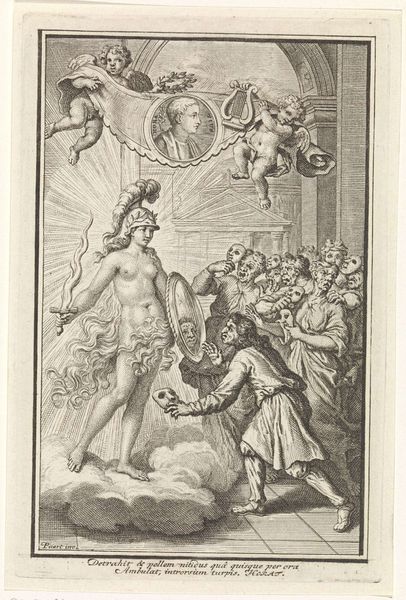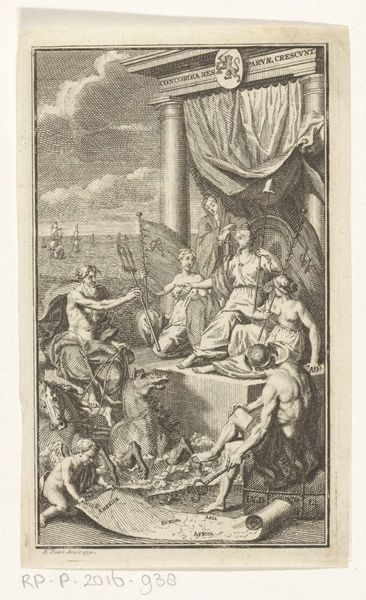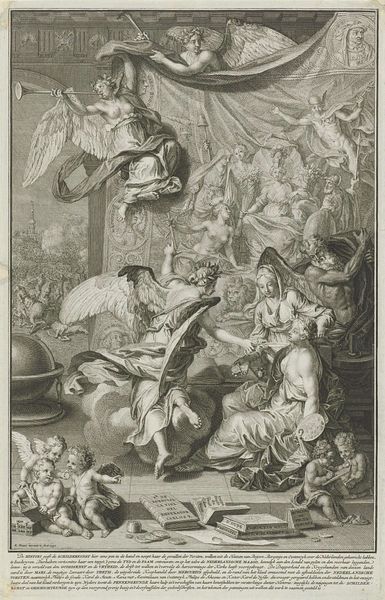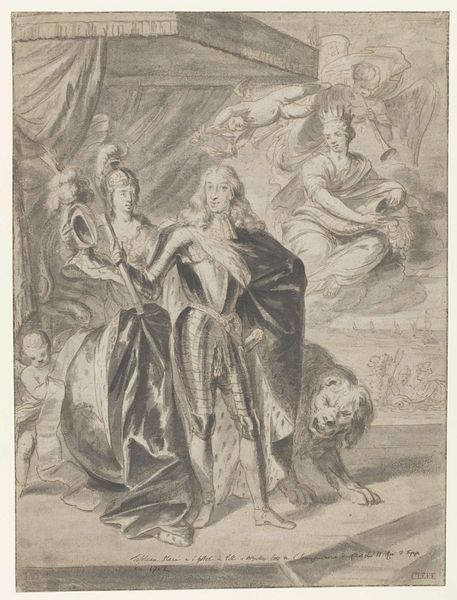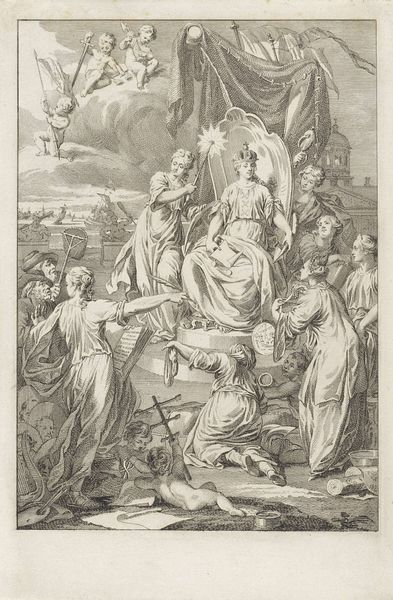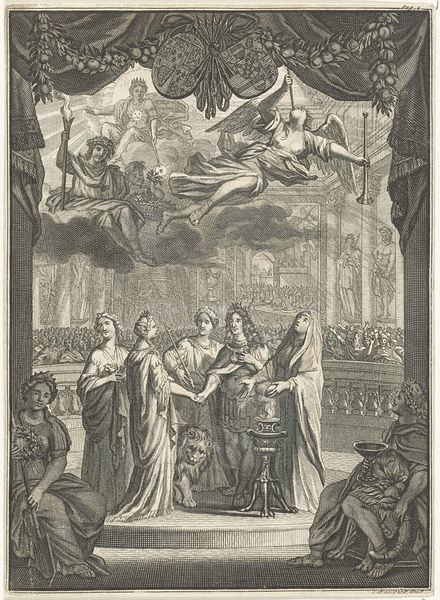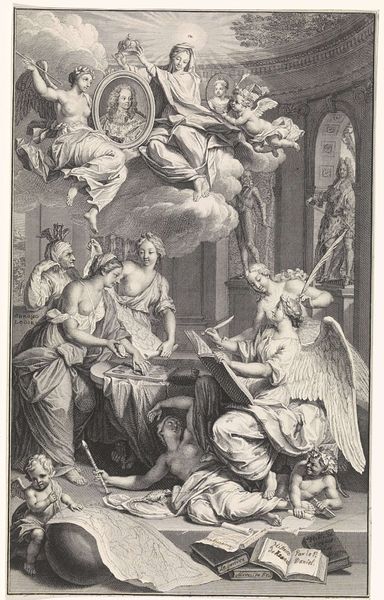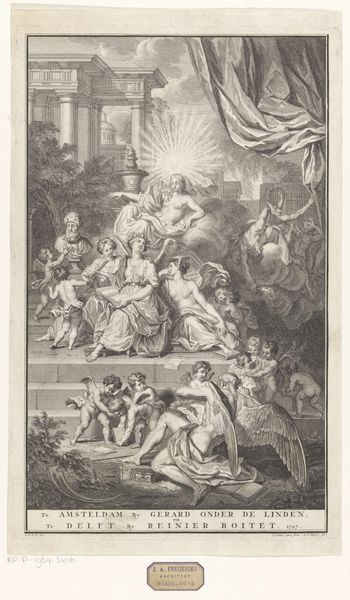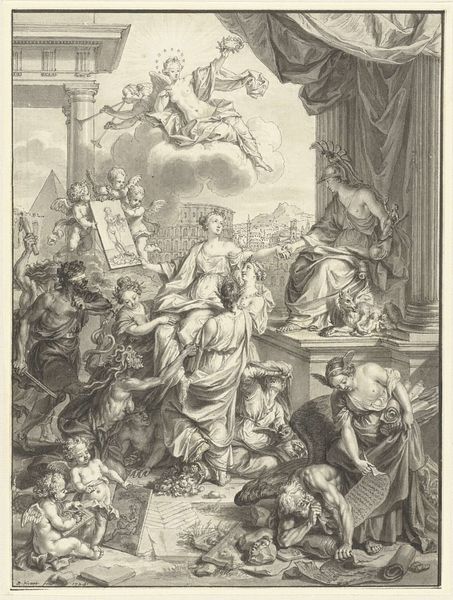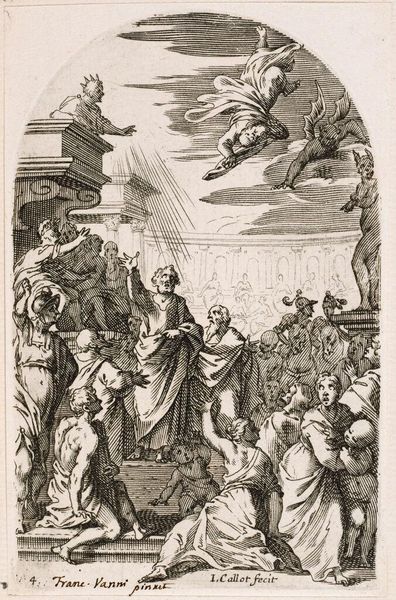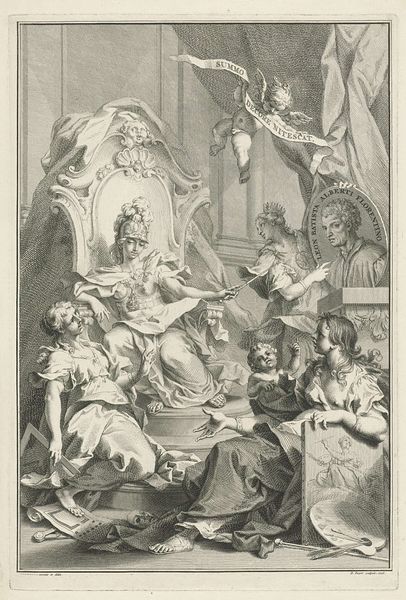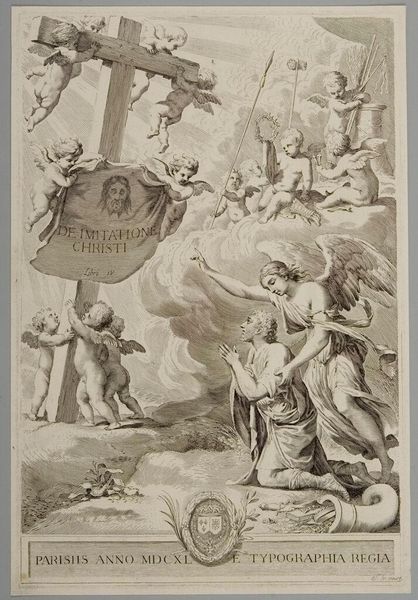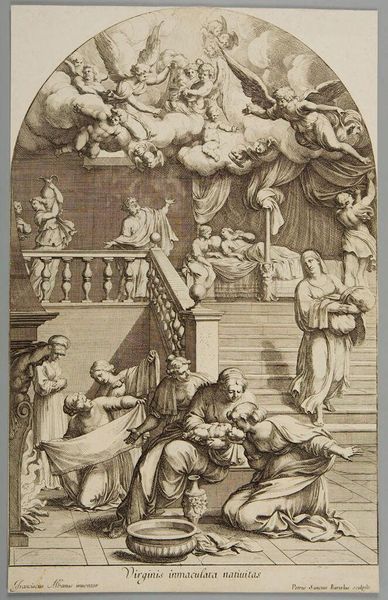
Allegorie op het huwelijk van aartshertogin Maria Anna van Oostenrijk en Karel Alexander van Lotharingen, 1744 1744
0:00
0:00
drawing, ink, pencil
#
portrait
#
drawing
#
ink drawing
#
allegory
#
narrative-art
#
ink
#
pencil drawing
#
group-portraits
#
pencil
#
history-painting
#
academic-art
#
rococo
Dimensions: height 797 mm, width 468 mm
Copyright: Rijks Museum: Open Domain
Curator: This pencil and ink drawing from 1744 held at the Rijksmuseum commemorates a royal alliance, its full title "Allegory on the marriage of Archduchess Maria Anna of Austria and Charles Alexander of Lorraine." Editor: It's striking—grand and theatrical. All the figures seem draped in shimmering fabric, even rendered in monochrome. Curator: Indeed, there's a Baroque exuberance. Look at the strategic deployment of familiar tropes; hovering angels with trumpets, classical architecture… it creates a symbolic tapestry for power. Editor: Absolutely, the angels suggest divine endorsement, but the kneeling figure at the forefront intrigues me. It's almost overwhelmed by the imposing scale of the royal party. Who are these historical people here? Curator: Precisely. This represents subservient, kneeling nations offering submission. Note also that marriage was essential in nation-building; a theater of dynastic legitimacy. Editor: I am seeing all the allegorical cues – even the seemingly objective details in fabrics serve their roles in shaping political narrative. It almost obscures any notion of genuine affection between individuals. Curator: A political tool certainly, the symbolic weight emphasizes duty and lineage over mere personal affection. Consider that in the lower part of the artwork there is also a text. "QUOD TUTIUS EST, HA HELGEA NOXIL" translates roughly to "Because it is safest, she defends." A motto of the city. Editor: The motto crystallizes that Vienna used marital diplomacy as soft power, projecting an image of benevolent strength. Does the style tie in, reinforcing certain messages? Curator: The Rococo style, even in monochromatic tones, lends elegance. These elements created a potent symbol—projecting prestige at a crucial political moment for both Austria and Lorraine. Editor: Reflecting on this drawing, it highlights how political power often clothes itself in appealing artistic forms. Curator: Precisely—art becomes another instrument of governance, a fascinating collision of aesthetics and statecraft.
Comments
No comments
Be the first to comment and join the conversation on the ultimate creative platform.
